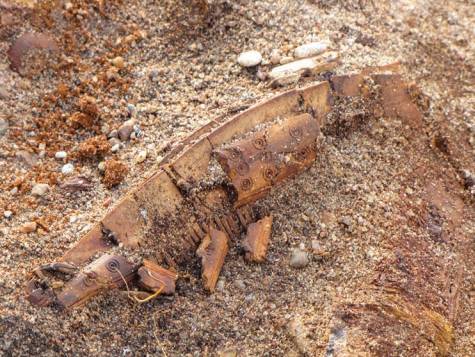York archaeologists publish new article on combs from pre-Viking Ship Burial
Steve Ashby and colleagues ask what hair combs found in a unique pre-Viking burial can tell us about this key moment in the development of northern European society.

The Department of Archaeology's Dr Steve Ashby is pleased to announce the publication of a detailed study of the combs from the unique pre-Viking site of Salme, Estonia. Here, two ship burials containing the remains of over 40 individuals, together with an array of weaponry and grave goods, have been dated to the mid-8th century AD, and as such represent the earliest known burials of their type. Moreover, they have changed the way we think about the military and maritime activity of the 'vikings' and their predecessors.
Few detailed studies of artefacts from the burials have yet been published. Together with ArchSci2020 student/fellow Mariana Munoz Rodriguez, Dr Camilla Speller and Krista McGrath (formerly of BioArCH), Steve has been working with a team of specialists from Estonia and Sweden to characterise the combs from the site in terms of form, ornament, technology and raw materials. The site presents a rare opportunity to investigate something of a time capsule, capturing a moment at the dawn of the Viking Age. The fine-grained study of the combs helps us to better understand the burials and the events that led to their formation, as well as to gain insight into the wider dynamics of northern European society on the eve of the Viking Age.
The paper has been published online, and is freely available to all here. It will be published in hard copy shortly.
Luik, H., J. Peets., J. Ljungkvist., L. Maldre., R. Maldre., R. Allmäe., M. Muñoz Rodríguez., K. Mcgrath., C. Speller. & S.P. Ashby. 2020. Antler combs from the Salme ship burials: find context, origin, dating and manufacture Estonian Journal of Archaeology 24: 3–44.
ABSTRACT
In 2008 and 2010, two partly destroyed ship burials were discovered near Salme on the island of Saaremaa. During the archaeological excavations, at least 41 wholly or partially preserved skeletons were discovered, and a large number of artefacts were found, including a dozen singlesided antler combs. On the basis of the finds, as well as radiocarbon dating, the ship burials were dated to the PreViking Period, while both the isotopic and archaeological evidence point towards central Sweden as the most probable origin of the buried individuals.
The combs from Salme have features that are generally consistent with the 8th century, with the closest parallels coming from the Mälar region of central Sweden. According to ZooMS and aDNA analyses, they are made of elk (Alces alces) and reindeer (Rangifer tarandus) antler. Elk inhabited the Mälar region, but reindeer antler had its origin in more northern regions. Most combs were clearly manufactured with great skill, and finished with care, though some details indicate differences in the skills of comb makers.